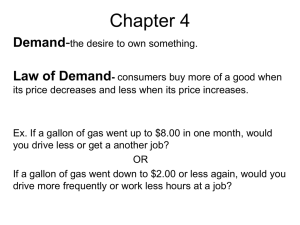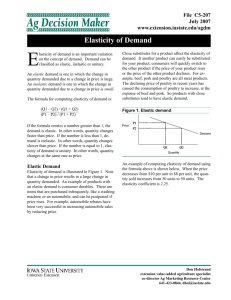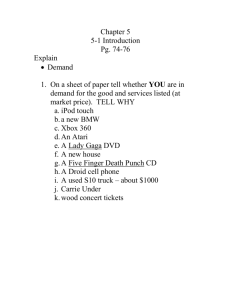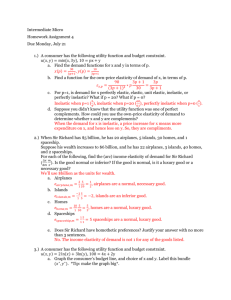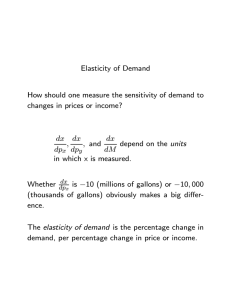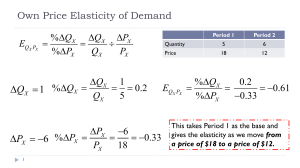Relationships of Changes in Price, Price Elasticity and Total
advertisement
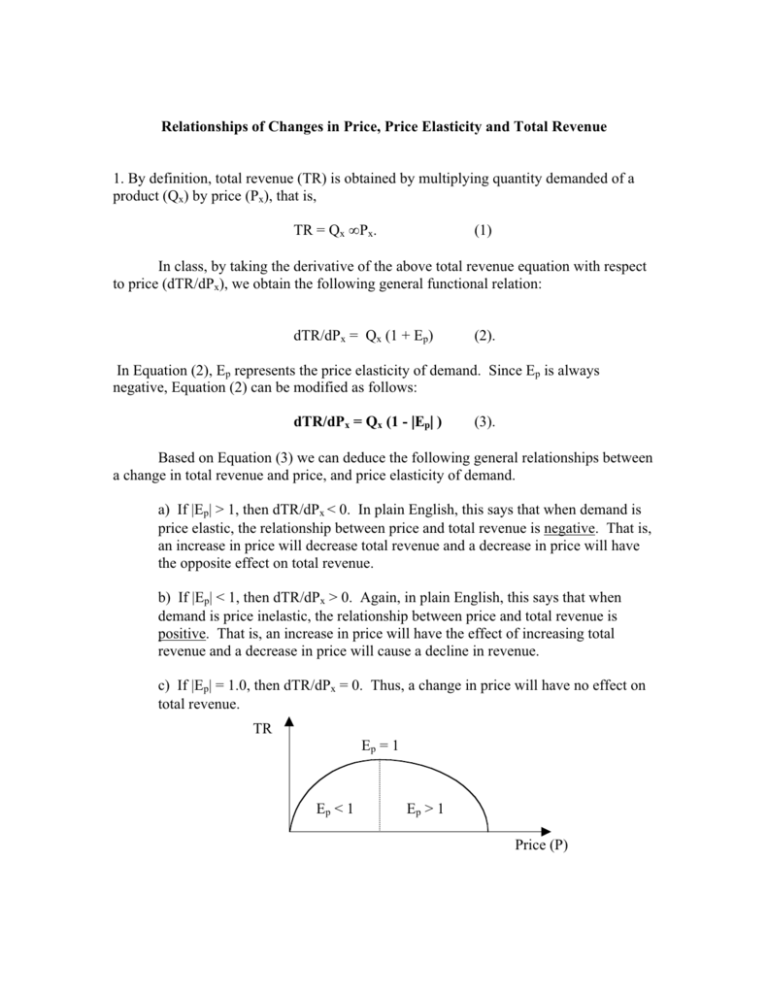
Relationships of Changes in Price, Price Elasticity and Total Revenue 1. By definition, total revenue (TR) is obtained by multiplying quantity demanded of a product (Qx) by price (Px), that is, TR = Qx • Px. (1) In class, by taking the derivative of the above total revenue equation with respect to price (dTR/dPx), we obtain the following general functional relation: dTR/dPx = Qx (1 + Ep) (2). In Equation (2), Ep represents the price elasticity of demand. Since Ep is always negative, Equation (2) can be modified as follows: dTR/dPx = Qx (1 - |Ep| ) (3). Based on Equation (3) we can deduce the following general relationships between a change in total revenue and price, and price elasticity of demand. a) If |Ep| > 1, then dTR/dPx < 0. In plain English, this says that when demand is price elastic, the relationship between price and total revenue is negative. That is, an increase in price will decrease total revenue and a decrease in price will have the opposite effect on total revenue. b) If |Ep| < 1, then dTR/dPx > 0. Again, in plain English, this says that when demand is price inelastic, the relationship between price and total revenue is positive. That is, an increase in price will have the effect of increasing total revenue and a decrease in price will cause a decline in revenue. c) If |Ep| = 1.0, then dTR/dPx = 0. Thus, a change in price will have no effect on total revenue. TR Ep = 1 Ep < 1 Ep > 1 Price (P) 2. Let us illustrate the above relationship using the following explicit demand equation: Qx = 100 –5Px, (4a) Px = 20 – 1/5 Qx (4b) or, Thus, using Equation (1) and (4b) together, the equation for total revenue can be derived as, TR = Qx • Px = Qx (20 – 1/5 Qx) = 20Qx – 1/5 (Qx)2 Table 1: Relationships of Changes in Price, Total Revenue and Price Elasticity. Price (Px) Demand or Qx = 100 –5Px Total Revenue or 20Qx – 1/5 (Qx)2 2 4 6 8 10 12 14 16 18 19 90 80 70 60 50 40 30 20 10 5 180 320 420 480 500 480 420 320 180 95 Elasticity or Ep = (dQx/dPx) • Px/Qx Elasticity -0.11 -0.25 -0.43 -0.67 -1.00 -1.50 -2.33 -4.00 -9.00 -19.00 inelastic inelastic inelastic inelastic unitary elastic elastic elastic elastic elastic elastic The following three observations can be made from the above table: • • • In the region of the demand schedule where the absolute value of price elasticity is less one (inelastic), an increase in price is associated with an increase in total revenue and vice versa. In the region of the demand schedule where the absolute value of price elasticity is unitary, total revenue is at its maximum. In the region of the demand schedule where the absolute value of price elasticity is greater than 1, an increase in price would lead to a decrease in revenue and a decrease in price will have the opposite effect.





